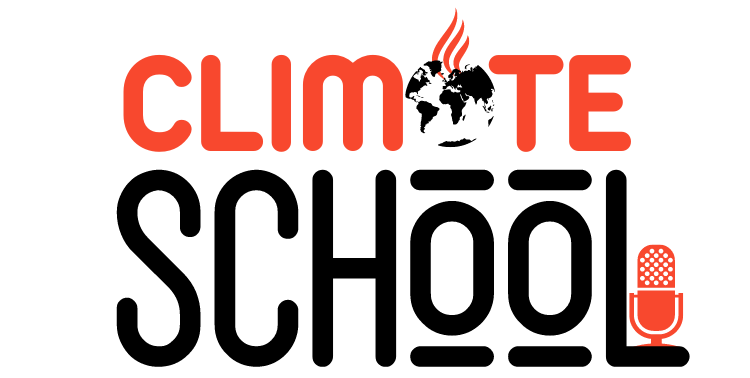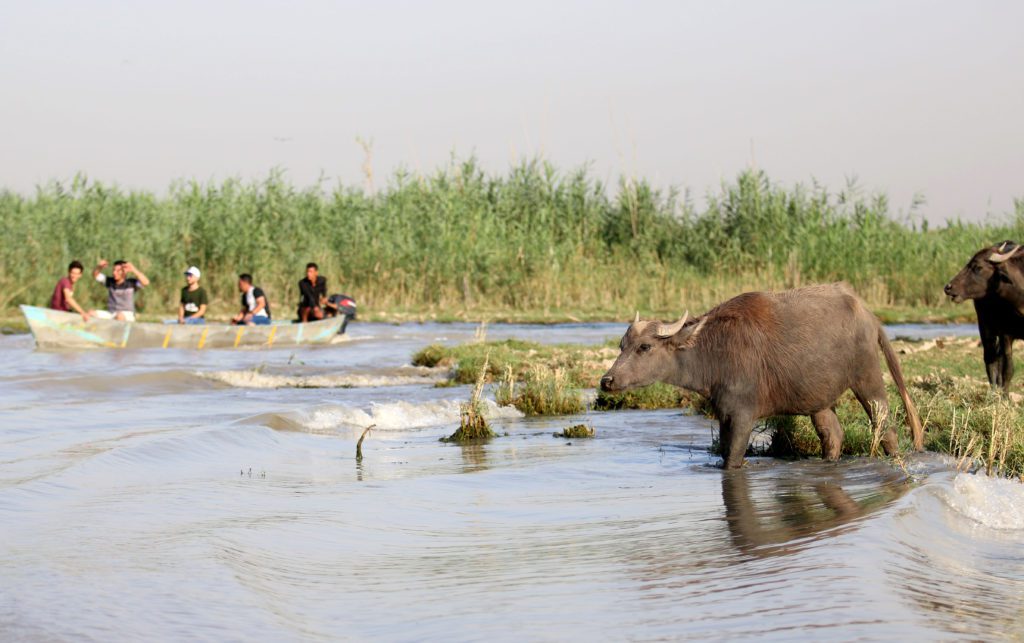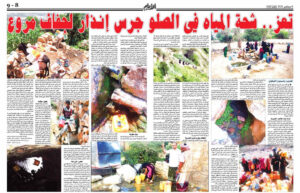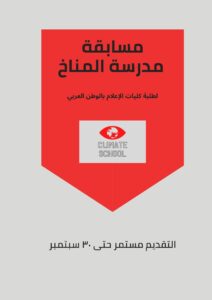Transported About Daraj website, published on January 16, 2023 You can refer to the original link from here
books : Muntazer Al-Kharasan - Iraqi journalist
Buffalo breeders in the marshes find the idea of rescuing animals with boats an alleviation of the burden placed on their shoulders, but they find it insufficient.
Veterinarian Karar Ibrahim sets out in the early hours of every morning towards the furthest point of the marshes of southern Iraq, accompanied by two people on board a veterinary ambulance boat that was created to conduct periodic examinations of livestock, as part of the project “Protecting Buffalo from the Harm of Drought.”
The River Veterinary Ambulance is the first project of its kind targeting the marsh environment to preserve buffalo in conjunction with the decrease in water levels in the marshes, with the rise in summer temperatures and the shrinkage of submerged areas as a result of the water policy followed in the upstream countries of Turkey and Iran. The Chibaish marshes east of Nasiriyah in southern Iraq were chosen for this. The project because it includes the largest body of water in the marshes of Basra and Maysan governorates.
In this aquatic environment, buffalo are exposed to many diseases during the dry season, as the decline in water quality and the increase in salt concentrations in it, in addition to its stagnation, cause an incubator environment for diseases.
The marshes region, although it was included on the World Heritage List in 2016, has not witnessed any improvement in the environmental reality, which obligates the countries that share with Iraq the waters of the Tigris and Euphrates, which feed Iraq, to have a fixed water share for the marshes in order to preserve the traditional life of the local population.
Doctor Karrar Ibrahim describes his ambulance boat as the largest among the marsh boats, as it can accommodate more than 6 people, with a small room containing the necessary tools to examine livestock. He moves with the captain and his companion among the water islands in the marshes, or “Jabashah,” and people live on these islands with their livestock from Buffaloes, routine examinations are conducted for this large animal, which weighs more than 800 kilograms, and the diseases afflicting it are diagnosed and advice is given on how to preserve this traditional livestock.
The ambulance boat is waiting to be supplied with additional equipment, including an ultrasound machine and some surgical tools used for operations if necessary. The doctor receives phone calls from some educators to visit them periodically.
This medical project was not a governmental idea after the local population had hoped to receive this attention from their government. Rather, it came from the “Iraqi Green Climate Organization,” a non-governmental organization concerned with environmental and water affairs, and with funding and sponsorship from the French government for one of its affiliated organizations concerned with veterinary and agricultural services. Funding the project initially to establish a water boat to serve as a river ambulance for veterinary services.
The technical director of the Green Climate Organization, Omar Al-Sheikhli, believes that the level of pressure that the Iraqi marshes have been exposed to is great as a result of the decline in the water level in them. “This has had a negative impact on its eternal animal, the buffalo, as it is a basic pillar in the economies of this environment and an important element that must be preserved, as it is one of the reasons Keeping the marshes on the World Heritage List is an important UNESCO standard for preserving the traditional life of the Marsh Arabs.” Al-Sheikhli confirms that transporting buffaloes from deep within the marshes to the medical center inside the city requires a large boat and a long distance exceeding 10 kilometers, and this costs the breeder significant amounts of money.
Al-Sheikhli continues that the ambulance boat was designed not only to reach remote areas in the marshes, but also to transport some buffaloes to the hospital if surgery was necessary. The boat is the largest of the boats inside the water body and carries necessary equipment and supplies for the specialist doctor to examine livestock.
The population began to respond to this idea when it was implemented, according to Al-Sheikhli, and if this stage is successful, the second stage can be entered after analyzing the data of the first stage, and then disseminating the idea in all the marshes areas in the cities of Basra and Maysan, with the training of veterinary personnel in the south by experts. From French veterinarians, which would contribute to the protection and preservation of livestock, especially buffaloes.
The veterinary ambulance project is accompanied by the presence of a fish expert who, during the boat tour, conducts separate meetings with fishermen to learn about their types and how to search for alternatives to overfishing in order to reach future results for protecting and preserving them.
The buffalo in the Chibayish marshes has many names, including “Barsha,” as the color of the hair on the face and ears is white while the rest of its body is black. This type of buffalo is very obedient, according to the breeders, and does not hear. These buffaloes in particular are deaf, and we do not know the real reason for their loss of hearing. As for the other type, it is called the “Suda,” and these buffaloes are characterized by the complete blackness of their bodies, or the “Partridge” due to the presence of a white collar on their feet, or the “Atra” with twisted horns.
Professor of Geography at Dhi Qar University, Hussein Al-Zayadi, believes that the buffalo is an essential pillar on which life in the marshes depends. It was afflicted by many problems that led to its breeders migrating and leaving their original homeland, so the numbers of buffalo decreased. One of the most important reasons is the scarcity of water and the lack of fodder, and this comes from governmental negligence. Despite the holding of successive conferences and seminars, the life of the marsh people remained simple and did not witness any remarkable development. The authorities did not provide any positive initiatives to improve the environmental, agricultural and economic situation of the marsh residents.
Al-Zaidi reveals that the areas that were exposed to drought from 1973 until 2016 are very large, as two-thirds of the water area was lost. After the estimated area of the marshes was 19,788 square kilometers, it recently reached only 6,852 square kilometers. This is a huge decline in the water area, and evidence of the extent of the drought that affected it.
The shrinkage of areas submerged in water has affected the proliferation of buffalo, according to estimates by Raad Al-Assadi, head of the “Al-Chibayish” Ecotourism Organization, as the number of buffalo currently stands at approximately 35,000, after the number had doubled approximately six years ago, in addition to the fact that the level of buffalo milk production has decreased by about 35,000. It is usual, as one buffalo used to produce 20 liters, while its milk production now amounts to only 10 kilograms.
Buffalo breeders in the marshes, led by Falah Hassan, who lives on the island of “Jabasha Al-Halalab”, in the middle of the marshes, find that the idea of rescuing the animals in boats reduces the burden placed on their shoulders, but they find it insufficient, and the matter requires maintaining the water level on a regular basis, and this is the basis. Otherwise, animal breeders will continue to sell their livestock and migrate from their lands threatened by drought.





